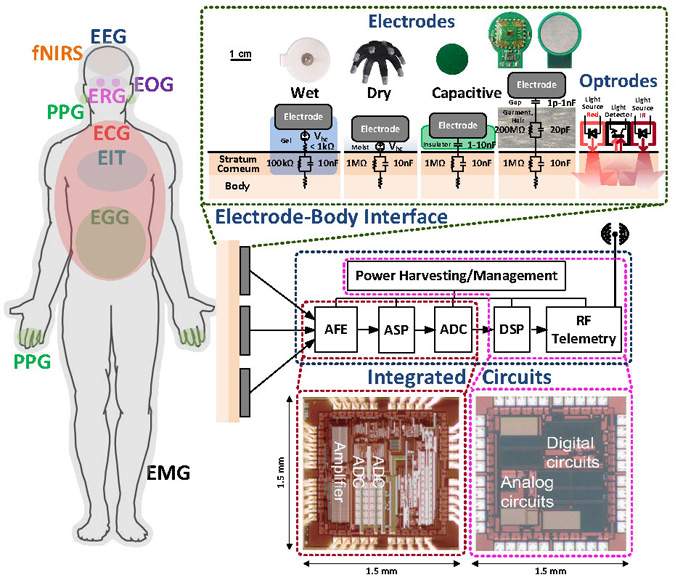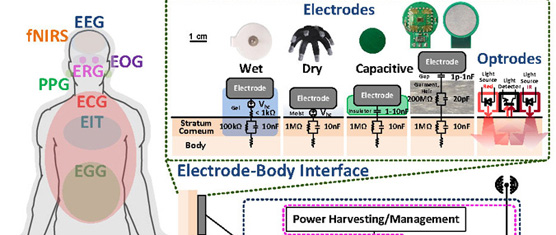Sohmyung Ha, Chul Kim, Yu Mike Chi, Abraham Akinin, Christoph Maier, Akinori Ueno, Gert Cauwenberghs
University of California San Diego, Cognionics Inc. & Tokyo Denki University, Volume 61, Issue 5, Page:1522-1537

Throughout the history of biomedical instrumentation, non-invasive techniques for physiological monitoring have been indispensable to health care practitioners for rapid, reliable, and minimally obtrusive diagnosis, whether during regular check-ups in the doctor’s office or during critical care delivery in the emergency room. Advances in microelectronic and optical integrated circuits and electrode interfaces offer technological foundations for transformative applications of continuous physiological sensing, improving efficiency and lowering cost of personalized care by pervasive and mobile monitoring of health and fitness anytime and anywhere.
This review presents an overview of the fundamentals and state-of-the-art in non-invasive physiological monitoring instrumentation with a focus on electrode and optrode interfaces to the body, and micropower integrated circuit design for unobtrusive wearable applications. The electrode/optrode body interface is a performance limiting factor in non-invasive monitoring systems, and practical interface configurations are offered for biopotential acquisition, electrode-tissue impedance measurement and optical biosignal sensing. A systematic approach to instrumentation amplifier (IA) design using CMOS transistors operating in weak inversion is shown to offer high energy and noise efficiency. Practical methodologies to obviate 1/f noise, counteract electrode offset drift, improve common-mode rejection ratio (CMRR), and obtain sub-Hz highpass cutoff are illustrated with a survey of the state-of-the-art IAs. Further, fundamental principles and state-of-the-art technologies for electrode-tissue impedance measurement, photoplethysmography (PPG), functional near-infrared spectroscopy (fNIRS) and signal coding and quantization are reviewed, with additional guidelines for overall power management including wireless transmission. Examples are presented of practical dry-contact and non-contact cardiac, respiratory, muscle and brain monitoring systems and their clinical applications.

